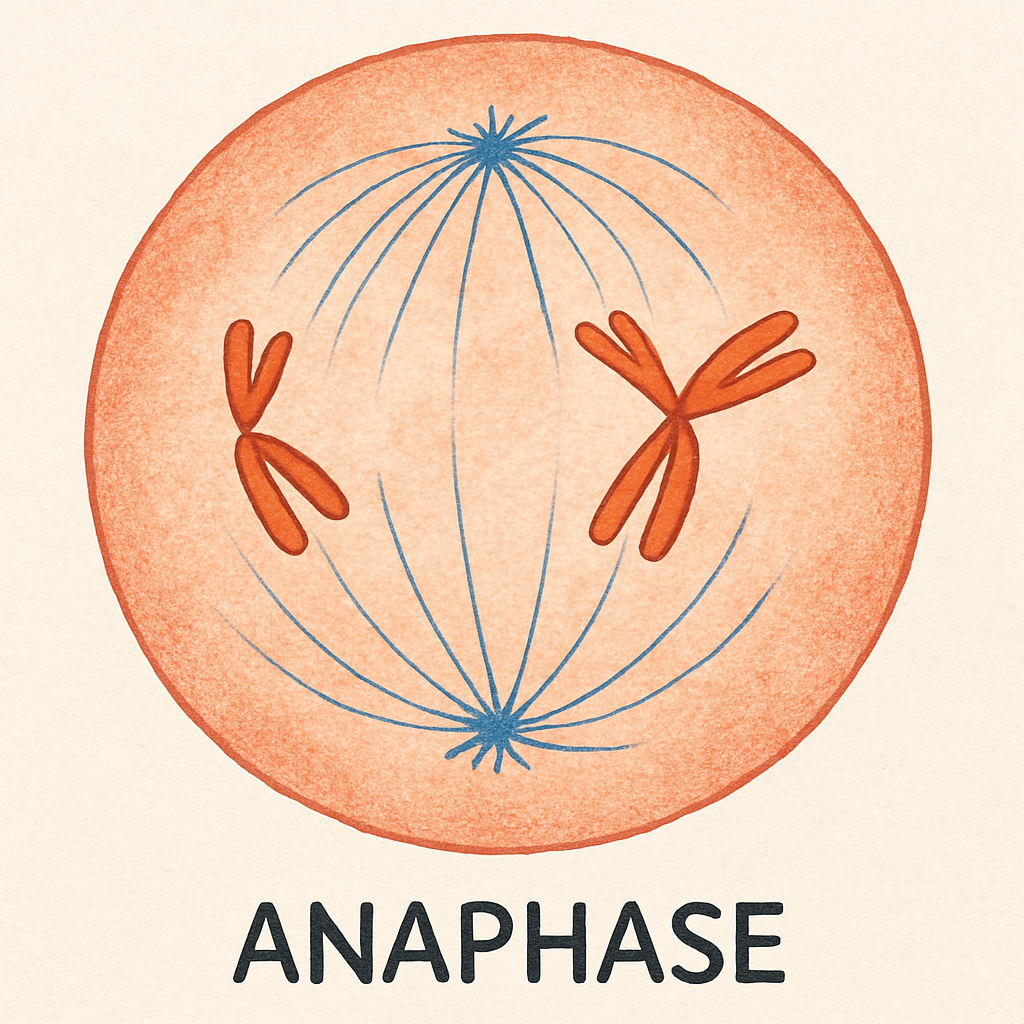Cell division, the process by which a single cell divides into two identical daughter cells, is a fundamental aspect of life. One of the critical stages of cell division is anaphase, a phase in both meiosis and mitosis where the chromosomes separate and move apart to opposite ends of the cell (Alberts et al., 2002).
The mechanism of anaphase
Anaphase commences following the metaphase, when the chromosomes align at the metaphase plate in the middle of the cell. It is divided into two stages: anaphase A and anaphase B. In anaphase A, the sister chromatids separate and move towards the opposite poles of the cell. This movement is facilitated by the shortening of microtubules connected to the kinetochores, protein structures found on the chromosomes (Tanenbaum et al., 2009).
In anaphase B, the cell elongates due to the lengthening of the polar microtubules. The cell poles move apart, furthering the separation of the sister chromatids and ensuring that each new cell will receive an identical set of chromosomes (Zhai et al., 1995).
The importance of anaphase
One of the critical aspects of anaphase is ensuring the accurate segregation of genetic material. This process is essential for maintaining genetic stability, as errors in chromosome segregation can lead to aneuploidy, a condition associated with several diseases, including cancer (Holland and Cleveland, 2009).
The role of proteins in anaphase
Several proteins play integral roles during anaphase. The Anaphase-Promoting Complex or Cyclosome (APC/C) is a multiprotein complex that initiates anaphase. It accomplishes this by targeting the securin protein for degradation, freeing an enzyme called separase. Separase then cleaves the cohesin complex, allowing the sister chromatids to separate (Peters, 2006).
Another set of proteins, known as motor proteins, drive the movement of chromosomes during anaphase. Two types of motor proteins, dynein and kinesin, work in opposition to create the forces necessary to move the chromosomes towards the cell poles (Sharp et al., 2000).
Anaphase in mitosis vs. meiosis
While anaphase occurs in both mitosis and meiosis, there are distinct differences. In mitosis, sister chromatids separate during anaphase to form two identical sets of chromosomes. In contrast, in meiosis I, homologous chromosomes separate, while in meiosis II, the sister chromatids separate, similar to mitosis (Nicklas, 1977).
Conclusion
Anaphase, thus, plays a pivotal role in the life of a cell, ensuring the accurate and equal distribution of genetic material during cell division. Understanding the mechanisms underlying anaphase can offer insights into various genetic disorders and cancers, providing potential therapeutic targets for their treatment.
References
Alberts B, Johnson A, Lewis J, et al. (2002). Molecular Biology of the Cell. 4th edition. New York: Garland Science.
Holland AJ, Cleveland DW. (2009). Boveri revisited: chromosomal instability, aneuploidy and tumorigenesis. Nat Rev Mol Cell Biol. 10(7):478-87.
Nicklas RB. (1977). How cells get the right chromosomes. Science. 197(4302): 393-9.
Peters J-M. (2006). The anaphase promoting complex/cyclosome: a machine designed to destroy. Nat Rev Mol Cell Biol. 7(9):644-56.
Sharp DJ, Rogers GC, Scholey JM. (2000). Microtubule motors in mitosis. Nature. 407(6800):41-7.
Tanenbaum ME, Medema RH. (2010). Mechanisms of centrosome separation and bipolar spindle assembly. Dev Cell. 19(6):797-806.
Zhai Y, Kronebusch PJ, Borisy GG. (1995). Kinetochore microtubule dynamics and the metaphase-anaphase transition. J Cell Biol. 131(3):721-34.


